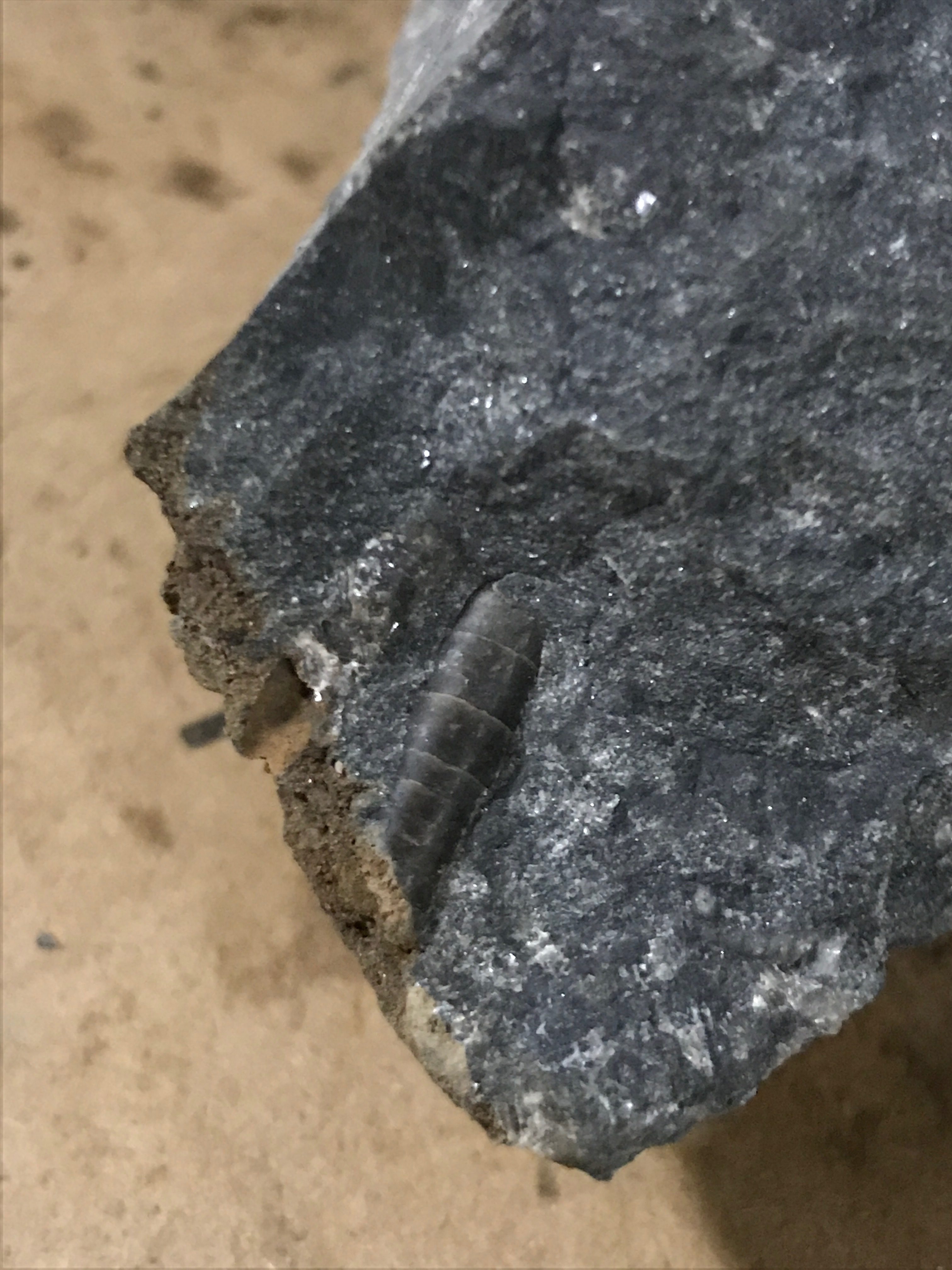Pseudorthoceras was first described by G. H. Girty in 1912. It was part of a paper describing new species of Pennsylvanian fossils from the Wewoka Formation of Oklahoma. The species appeared 376 million years ago and disappeared during the Permian–Triassic extinction event 252 million years ago. This extinction, known as the most severe, claimed 96% of all marine species.
While busting up a piece of limestone I dropped from the hill below me, this interesting piece showed up. It’s very embedded, and I will have to hit it with the air scribe for a while if I want to expose more. I thought it was Striacoceras, but my area is much too young. This piece is very shiny, having avoided some of the weathered edges. There is another one I believe to the left of it in this photo.
Taking out the Garbage
A paper by B. Kröger and R. H. Mapes describes how Mooreceras and Pseudorthoceras can be a garbage-can taxon. Since individual species are hard to identify, finds are typically assigned a genus and not given a distinct species.
Weathered Limestone Edges
The edges of the limestone that contact other layers seem to soften greatly, turning into an almost reddish mush that breaks apart readily. The limestone is hard and somewhat brittle. The photo below shows that the weathering at the bottom left edge is eroded.
Later, I found a better example of Mooreoceras in the reddish layer at a different place.
Update: October 2021
This specimen was an exciting find, but it turned out to be just a small piece on a large rock. While early on I thought that perhaps the entire shell was in the rock, it turns out that more often than not that is not likely the case with any specimens found in Brush Creek limestone.
More about Pseudorthoceras Online
- Taxon Page – Fossilworks
- Permian-Triassic extinction event – Wikipedia
- B. Kröger, R.H. Mapes, Revision of some common Carboniferous genera of North American orthocerid nautiloids, Journal of Paleontology – ResearchGate
References
- G. H. Girty. 1912. On some new genera and species of Pennsylvanian fossils from the Wewoka Formation of Oklahoma. Annals of the New York Academy of Sciences21(2):119-156 [P. Wagner/P. Wagner]
- Benton M J (2005). When Life Nearly Died: The greatest mass extinction of all time. London: Thames & Hudson.

